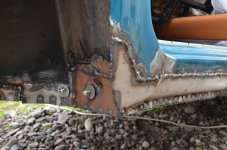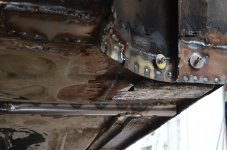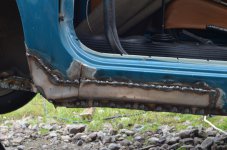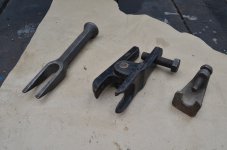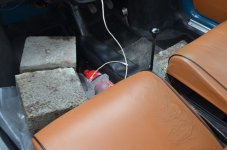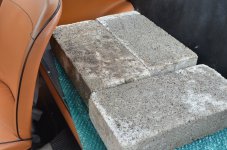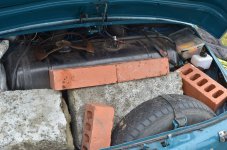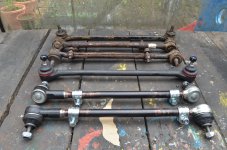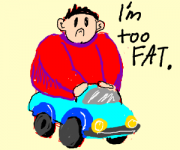Over the last month, in between showers of rain and harsh winds, I have been drawn into an unplanned series of repairs to Murf which have been more stringent and thorough than I think any MOT inspection has ever thrown at me.
The floor and sills have had a lot of careful reconstruction and I suspect there is a little bit more to do around one of the rear jacking-points. I've fitted a new horn, completely replenished the brake-fluid and I have four new tyres awaiting fitment. Now, having already noted that the toe-in had become upset, I have fitted a complete new set of steering balljoints and rods.
The ones fitted are the originals and when I restored the car I was able to re-use them, fitting new dust-covers after regreasing the balls. But as soon as I tried to adjust the rods I could see that they were badly seized and weakened through corrosion; one of them started to twist!

and this is probably what put the toe-in out in the first place. The balljoints themselves appeared to be unworn but they're being thrown away in any case. So, after 50 years, I decided that I'd had my moneysworth and stumped up for new ones from the fantastic "Auto-Bella" via eBay....fast delivery and very competitive pricing. Incidentally, I noticed that I have acquire three balljoint removal options over the years; the one in the centre of the image is by far the best.
In order to get things as accurate as possible I loaded the car with approximately 110 Kg of blocks to simulate the actual weight when driving; that's a good 30% more than I weigh and flattened the front spring, which I assume is the intention in the instructions that toe-in should be checked with the car loaded. By good fortune (or maybe by being very methodical) the steering wheel has stayed nicely central and the car certainly drives well.
The key thing is that I have avoided the temptation to go further than necessary and kept the car within a day's work of becoming mobile again at all times; thus avoiding the "trap" into which I think that many classic-car owners fall and which often leads to the cars being unroadworthy for many years.
So for all of those people who in the past have implied that the MOT exemption might lead to cars becoming neglected and unsafe, here's one vehicle that definitely breaks that hypothetical pattern.

Those track-rods and the rotten floor were passed as OK by the professionals a bit more than a year ago.
Brilliant.



